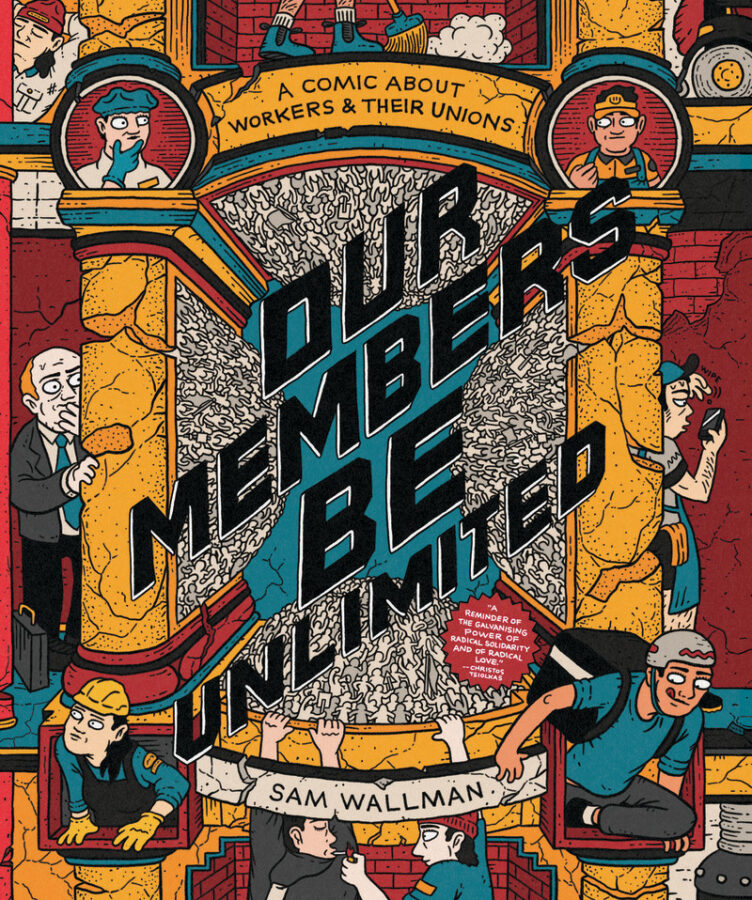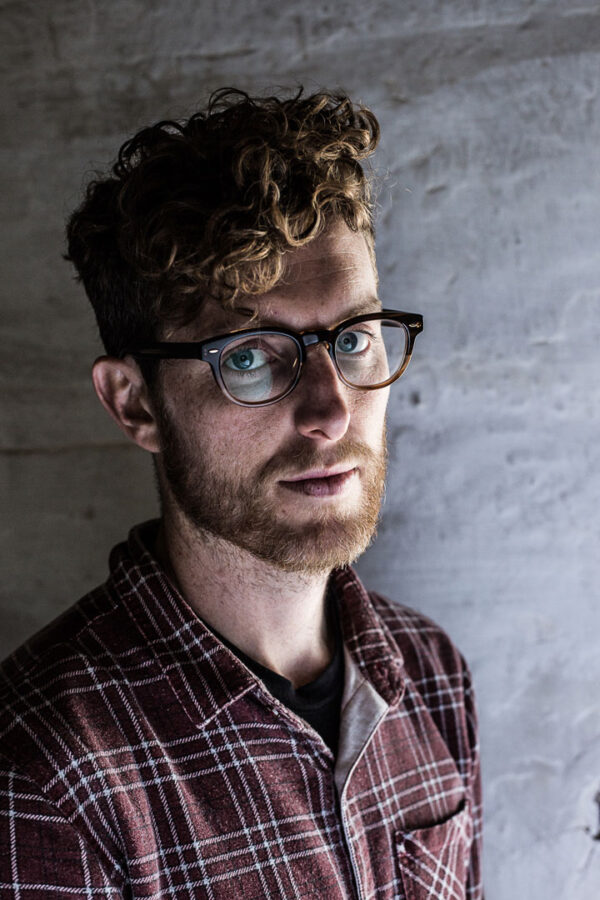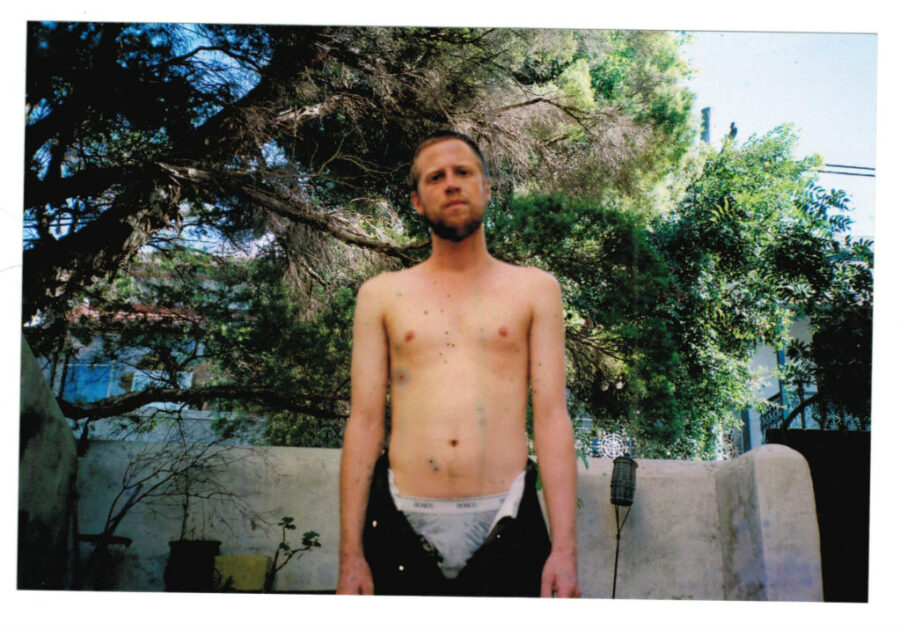
I have had several fleeting encounters with unusual creatures over the course of my life, but I’ve never seen a platypus. There was a time when a baby Tasmanian devil – an imp – ran between my legs with a stolen sock in its mouth. On another occasion an old bull-dolphin blasted out of the ocean so close to me I could almost brush its lumpy scars with my fingers. As I write this, a green catbird is right outside my window. Its head is cocked and its feathers are luminous in late morning light. All this to say. I’ve had some glorious sightings, but I’ve never seen a platypus.
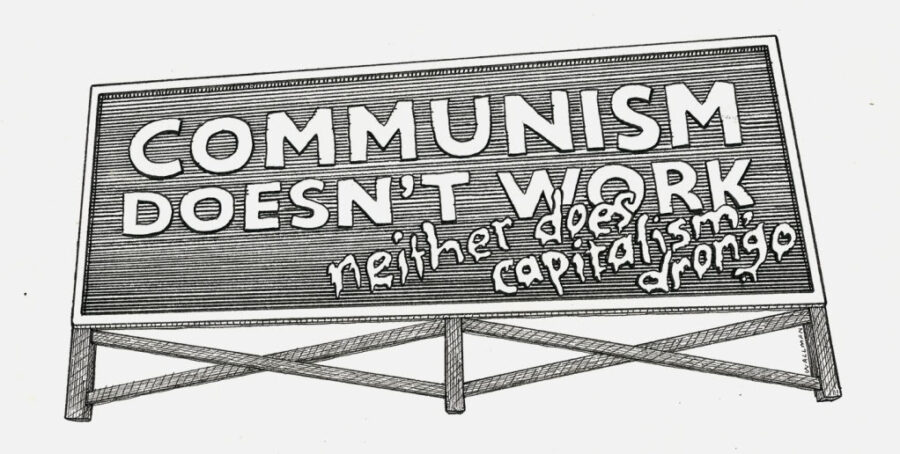
Good political graphics are rare and precious. Like my friend the catbird, they seem to touch our spirits for a moment and then float off into the foliage. If I think of the times when my political worldview stretched, warped or inverted, these moments are often marked by encounters with a powerful image. A picture, or perhaps a series of pictures, created by a sharp political mind that was connected to a hand of fire that was connected to a pencil or a brush. When I was ten it was a druggy Captain Goodvibes collection in a surf club toilet. When I was twelve it was a zine about safe sex for queer students found in an older sister’s dorm room. When I was nineteen it was a collection of Indonesian political art from the Taring Padi movement. When I was 23 it was a screen-print by Redback Graphics hanging in an old clayworker’s garage. I didn’t know what these images were at the time, but I felt them bend my politics, forcing me to reassess what is true, what is right, what is possible.
In his first major work of long-form comics, Sam Wallman has set out to enable just this kind of formative experience. Our Members be Unlimited is a book of about workers and their unions. It starts out with the formation of the first workers union in a dark field in Europe, and takes us all the way to the first rumblings of new unions in gig-economy workplaces like the Amazon fulfilment centre. It’s an innovative new onramp for a modern politics of collectivism and its possibilities.
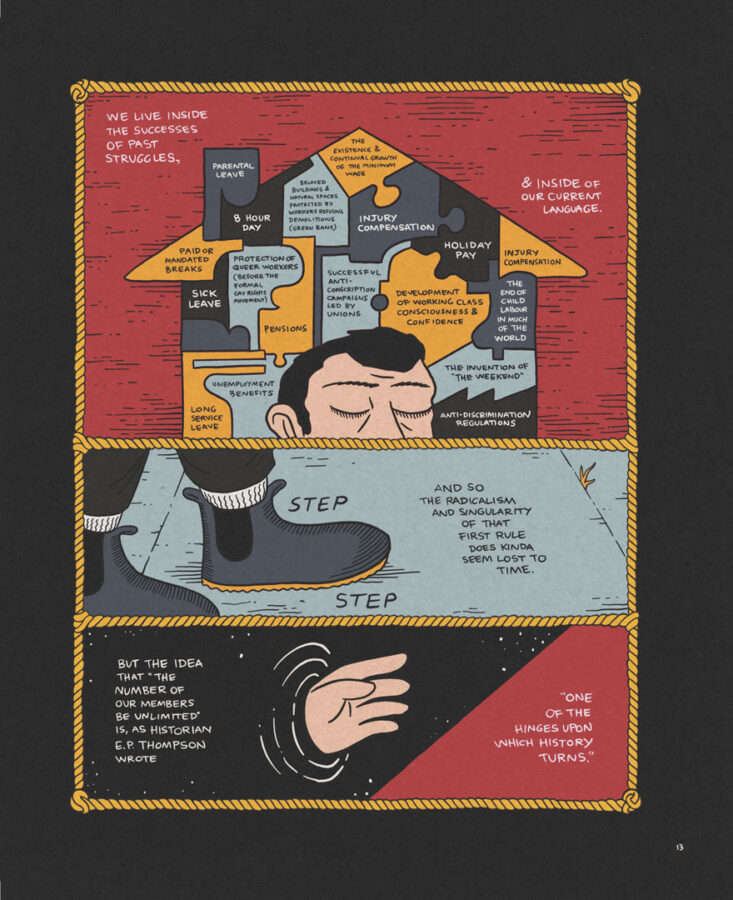
Anyone who knows much about the way graphic novels like this are created will have a sense of how unlikely they are as literary phenomena. Drawing stories in long-form is so unreasonable in its demands on an author, the market for such books is so narrow, the editorial tradition so ill-equipped at working with visual stories, that every time one comes out – to me at least – it’s a surprise. It’s a koala in the suburban fringe. A beautiful eel in a concrete spillway. Even after all the chaos and brutality that has taken place on the floors of our newsrooms and publishing houses, there are still weird, impossible books like this coming out. I’ve been waiting patiently in my camouflage for a sighting of this hefty new Wallman and, for a few weeks, it has been in the centre of my field of vision.
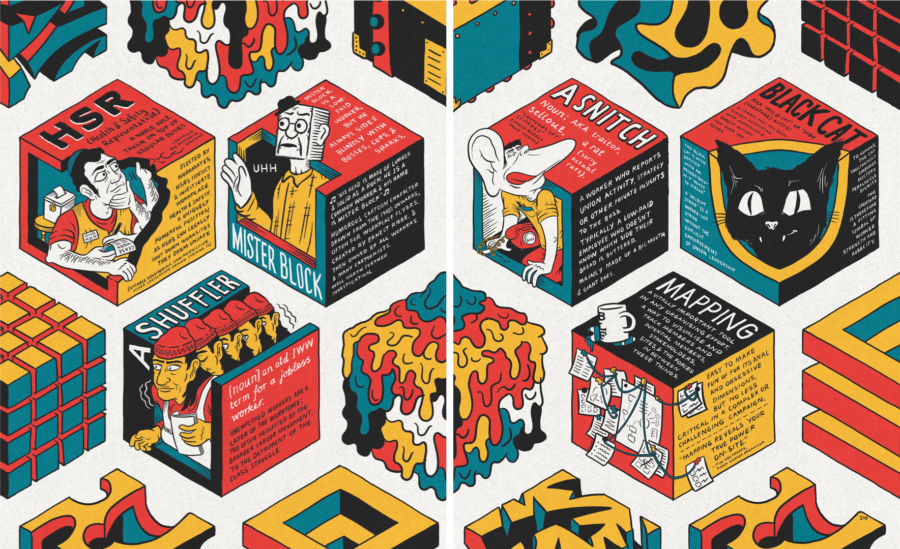
This book presents itself as a work of comics journalism, but when we really look at it, it is more accurately a set of discrete visual essays that are all working in different ways to bring-the-reader-in to unionism. For all his earnest intent, Wallman knows his reader. The book knows that we pay our union dues but never read the emails from our rep down the hall. The book knows that we’ll take the 1 per cent pay rise from the latest round of collective bargaining, but we’re not going to turn the process into a folk song. The book knows that we’re happy that Albo is in the PM’s office but we’re also happy that he’s not in our group-chat. The tech companies have sold us on the age of individualist identity politics and micro-entrepreneurship and we bought it like a bunch of turkeys. These days, togetherness and the agency that comes with it is something that they manage for us with their algorithms. The last 20 years would have us believe that fill-out-the-form unionism is not only redundant, it is definitively uncool. But here’s the thing: Sam Wallman is cool. He has been a Geelong boofhead, then a young ratbag of the anarchist flavour, then a jizz-mopper at a gay bathhouse, an inner-north art-god and, most recently, an unusually dedicated union guy. And he wants us to reappraise the ambient gifts that unions of the past have given us, like weekends and eight-hour work days, and to imagine similar things that unions of the future could do for us. The book demands us to consider the potential of the growing anger and alienation we feel as workers in a tech mogul’s world, something the Sydney poet Andrew Brooks refers to as ‘communistic promise’.
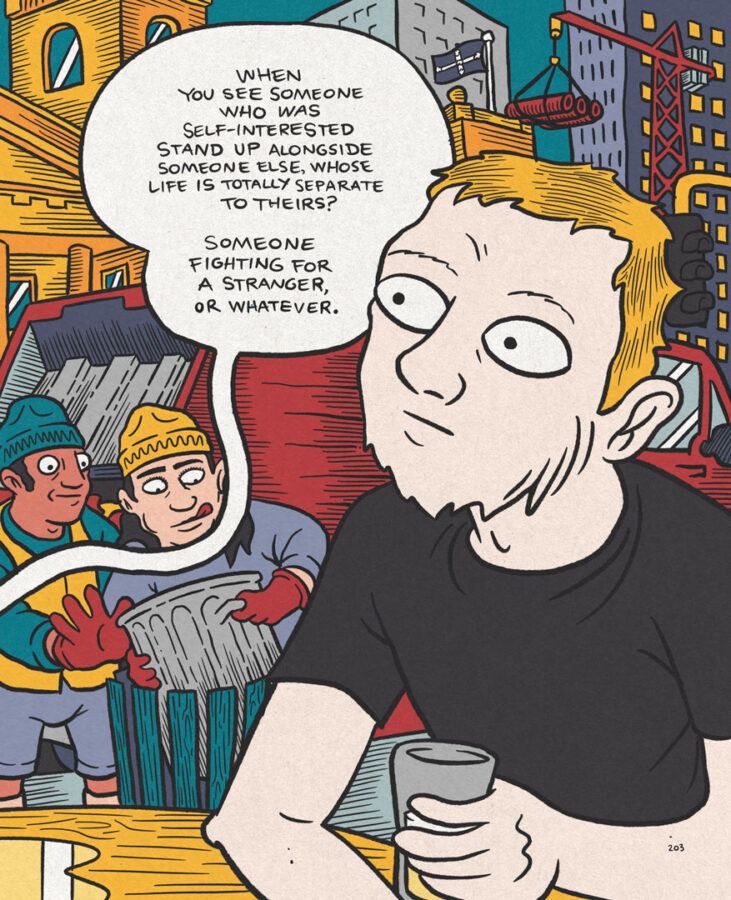
At one point Wallman draws himself at a café with a friend, discussing the central problem of the book:
How are you gonna articulate how it FEELS to be supported by unions? that feeling when you see someone who has been disempowered their whole life winning? when you see someone who was previously selfish stand tall next to someone else, whose life is totally separate to their own? how the fuck are you gonna draw that, how are you gonna make the reader feel that?
The cartoon version of Wallman who appears throughout the book confesses that he has no answer to these questions. But he does. The answer is non-propositional and right there in front of us. Each chapter attacks this problem visually using wildly different graphic devices that draw from autobiographical comics, illustrated reference books, cartography, data-visualisation and – most indelibly – a long history of labour movement banners and graphics, upon which Wallman is a doting authority. The thesis of the book can be gathered from the central illustrative motif of working humans caring for each other in delicate acts of embodied unity.
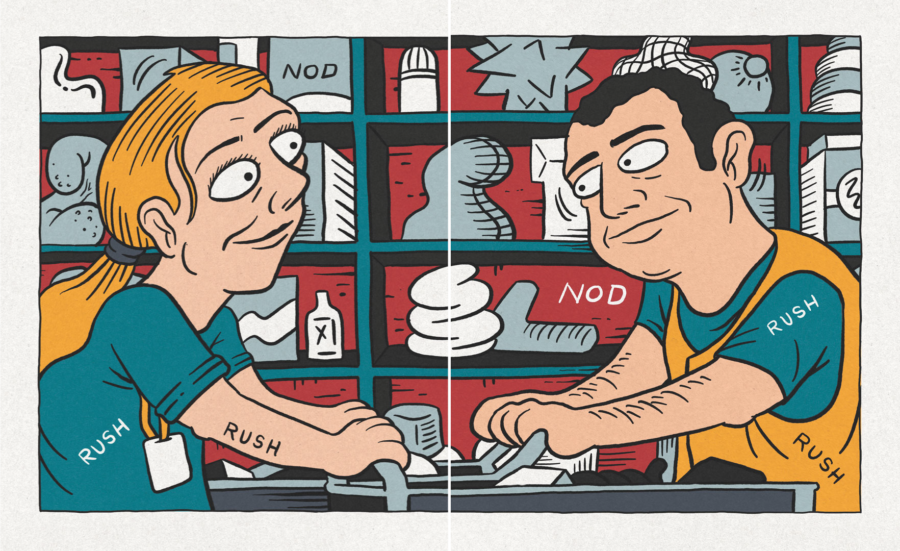
Most political comics fall into two categories that we might best understand through a taxonomy of dubious bakery treats. Political comics sometime show up with good politics and bad art, like one of those vegan pies from the food co-op. Sure, it’s dry and hard on the outside but there is some nice righteous mush in there for the persistent. On the other hand, sometimes, political comics show up with good art and undercooked politics, like a Four and Twenty from the service station. The pastry feels right but it’s really just lukewarm jelly-mince once you get into it. In his review of the Booker-nominated graphic novel Sabrina, Ben Juers makes a great case for the misunderstood genre of ‘art comics’ and why seasoned comics readers roll their eyes at weighty graphic novels that declare themselves to be about something important. If there is a wrong way to explore big ideas in comics perhaps it is typified by a writer – usually a writer – who has brought fully formed, propositional ideas into a collaboration with an artist, resulting in a visual language that feels tediously redundant and lacking in some sort of vital lifeforce. But when the reverse happens – when comics makers stop making comics that are really just about comics, and decide to come at a big idea – the result often feels under-researched, under-workshopped and under-edited. I wonder what’s going on here. An ungenerous explanation could be that comics people – like me – found their medium through an impulse to draw and a mild terror of reading and writing. I prefer, though, to believe that the ideas that are compelling to the people who make comics are ideas that are belligerently non-propositional. The sort of ideas that can only find form in a rhythmic slippage between wonky handwriting and a crudely drawn glyph. These are the sort of ideas that baffle high school English teachers and confound book clubs, but make comics people feel like they are privy to a secret kind of knowing.
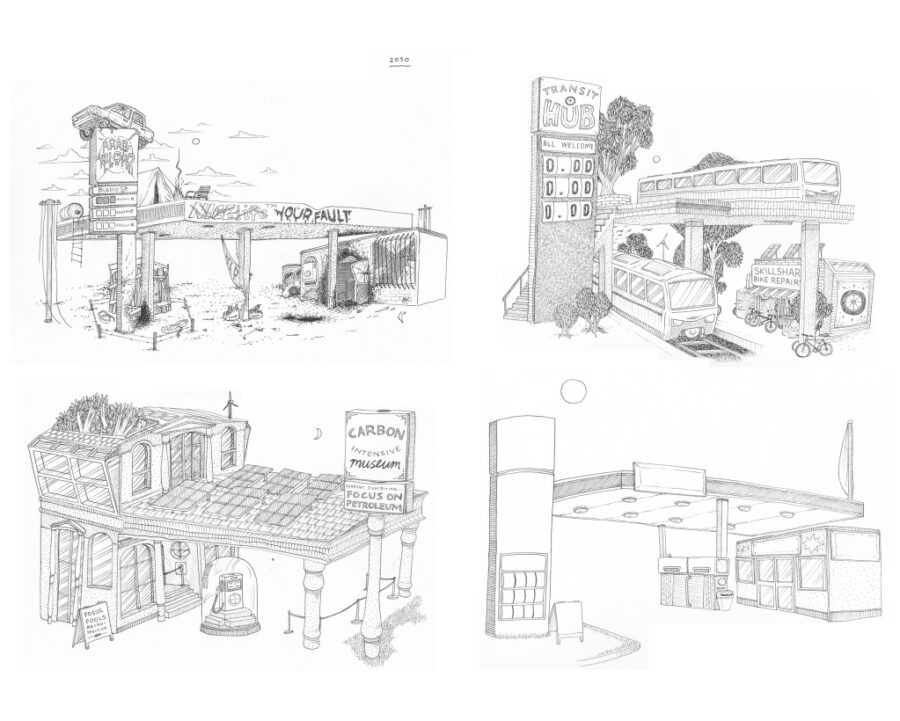
If this is true, then Wallman is probably the right person to make this crossing from the insular tradition of ‘art-comics’ to a bigger, drier, more accessible tradition of non-fiction graphic novels. He is a god of zines and art comics, but underneath that he is an ideologue and activist, which is to say he doesn’t have to reach too hard for his own big ideas. If you have been following his career as closely as I have, you’ll know that everything he draws, even a picture of a curtain blowing in the wind, is emphatically about something huge.
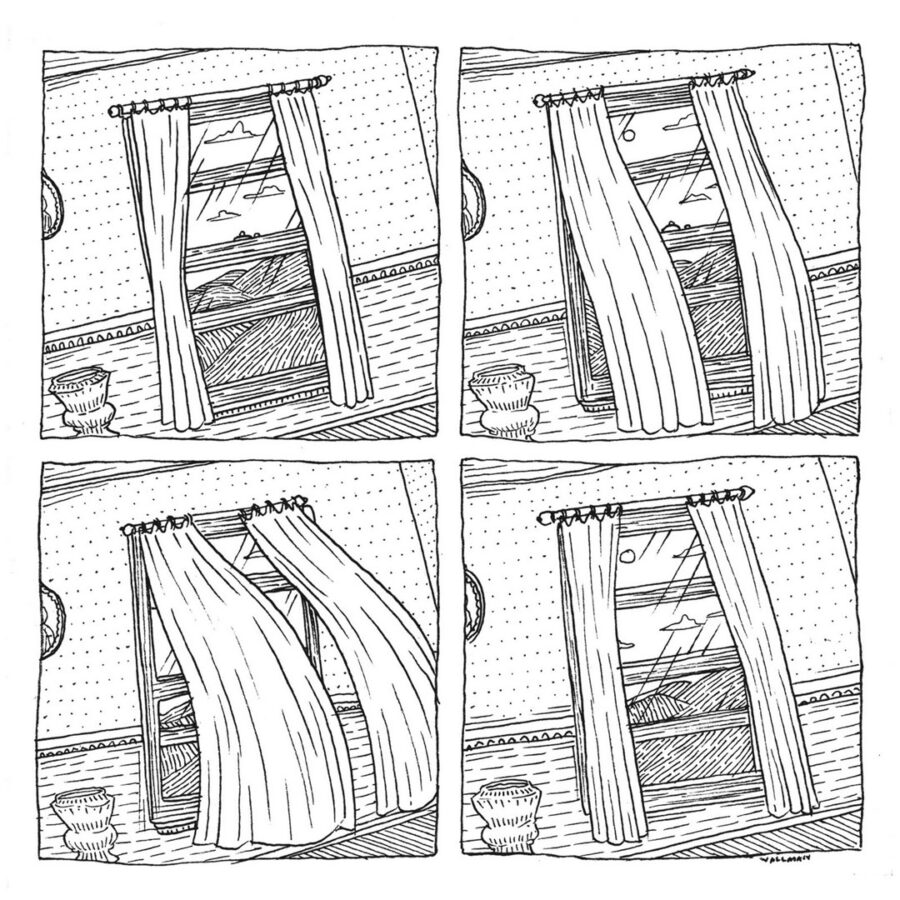
An Early Sighting
My first sighting of Wallman was memorable. Some friends and I had travelled to Melbourne in late 2006 to yell and scream outside the G20 Economic Summit. I was with my friend Tom in a zine shop called Sticky, a place for people like me, who can rarely finish a novel but will spend days flicking through obscure handmade pamphlets. Often what you are looking for when you’re browsing the new zines from all over the world is an unfiltered voice, a paragraph of impulsive writing or a shit drawing that could halt your breath. If you’re lucky, you might encounter something eternal, like, say, early career Anwen Crawford or Ianto Ware, but this is rare. It’s not mean-spirited to say that the literature on the walls is of a zine shop, like the organic material on the floor of a rainforest, is compost-in-waiting. This day, I saw Wallman’s zine on the top shelf from across the room and it was like spotting a cassowary in the leaf litter.
Inside were merciless and hilarious portraits of people that Wallman had observed on the streets of Melbourne and Geelong. His fixed-width marker is delightfully ungenerous to leering bigots, crunchy hypocrites, middle managers and slimy real estate agents. Of course, these are cheap thrills – the twelve-bar blues of political graphics – but it was immediately clear that there was much more going on here. What was remarkable to me, even in this early work, was how fully-formed and accessible he was as a visual stylist. It seems as though he learned to draw by fastidiously copying from The Simpsons but also, somehow, copying with equal dedication from photos of your most racist relatives. His drawing habits have always been so seamlessly integrated with his political dreaming that you can see the shape of his politics in all of its nuance, in a few short glances.
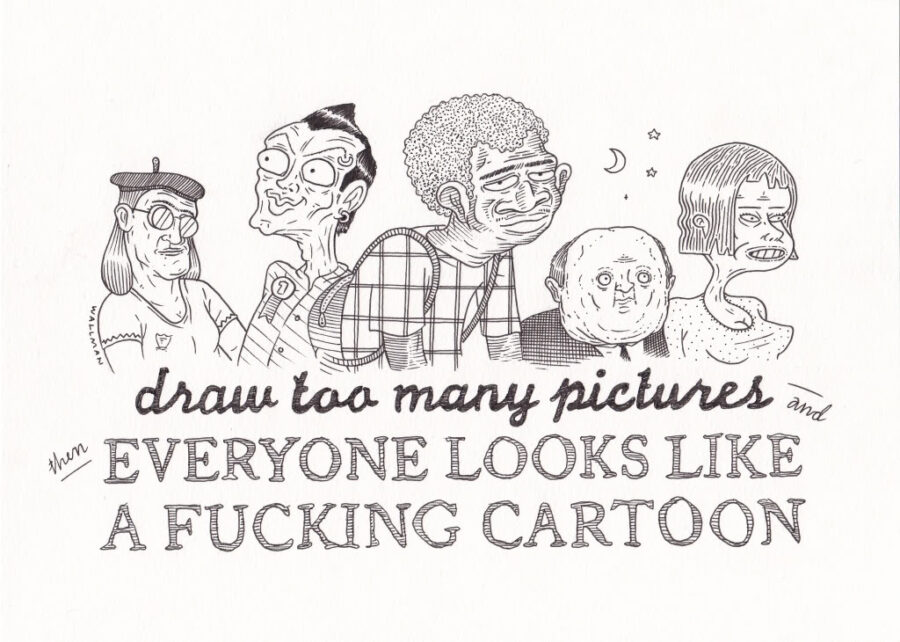
I bought the zine and put it in my backpack. Years later I heard Wallman reflecting on this particular zine in a radio interview. He said, with his trademark reflective honesty, that this zine was an expression of a very ‘angry’ part of his life. I guess the zine found me at just the right time. I was still in possession of a small amount of undergraduate idealism, but it had begun to curdle. My post-university existence, working in retail and hospitality, was exhausting and alienating. I might have been Wallman’s ideal audience. The next day, with the zine still in my backpack, I found myself wandering drunk and alone among the last nihilistic stragglers of an anti-globalisation rally. I was scuffling with police officers with one hand and clutching a brown bottle in the other. I had a vision of myself as a Wallman grotesque and at once I felt my feeble activist impulses turn in a new direction.
‘Maybe,’ I thought, ‘I should learn how to draw properly, instead of whatever this is.’
I had the zine with me for a few short hours before I lost it. It was probably when the squat on Johnston Street got raided and all of our bags and sleeping gear were carted across the inner north to be piled into a stinking mountain in a windowless room at Melbourne Uni. Maybe the zine is still there.
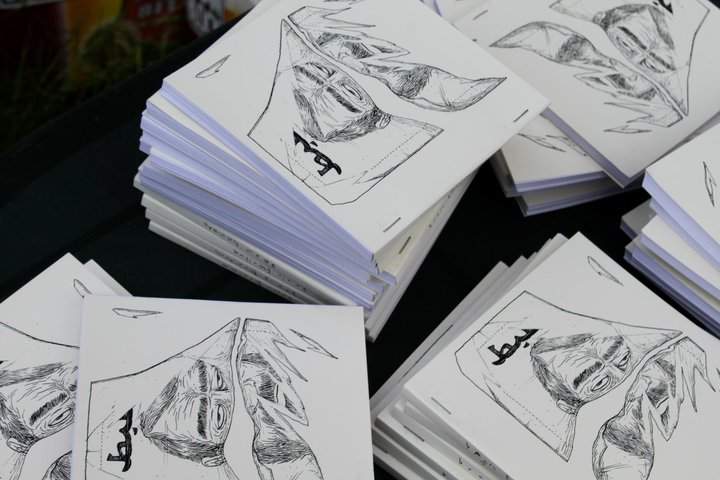
More Lost Sightings
In the decade and a half that followed I stopped going to activist meetings and chose instead to sit behind tables at zine fairs and comic conventions. I watched Wallman become legendary in the DIY art scene as he gave new life to the atrophied and problematic tradition of Australian political cartooning. My favourite period of Wallman is a run of activity between a zine called Brain Furniture (pictured above), through the pages of a zine called Being Born is Going Blind (2011), to a zine called Pen Erases Paper (2013). During this period Wallman’s marker lines can be fussy and rigid, but his lines of inquiry are wildly improvised and playful.
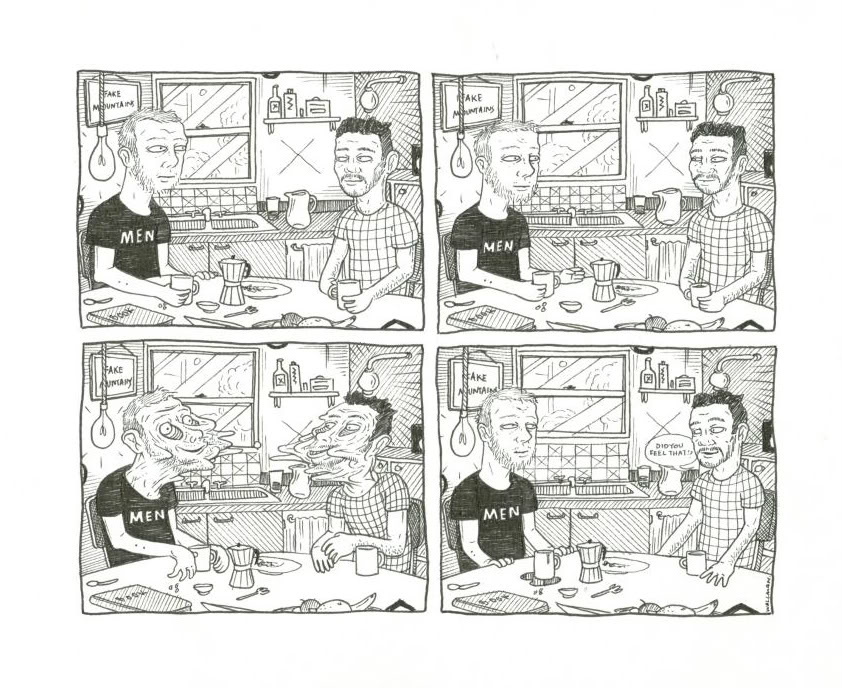
Each cartoon is raw, like a diary entry in a sketchbook. Flicking through this material it’s easy to imagine Wallman drawing furiously for hours every night, working to capture the form of the day’s shapeshifting politics. Through the matrix of cross-hatching you can see lived research: hours of yarning and arguing with interesting weirdos over cups of tea and longnecks.
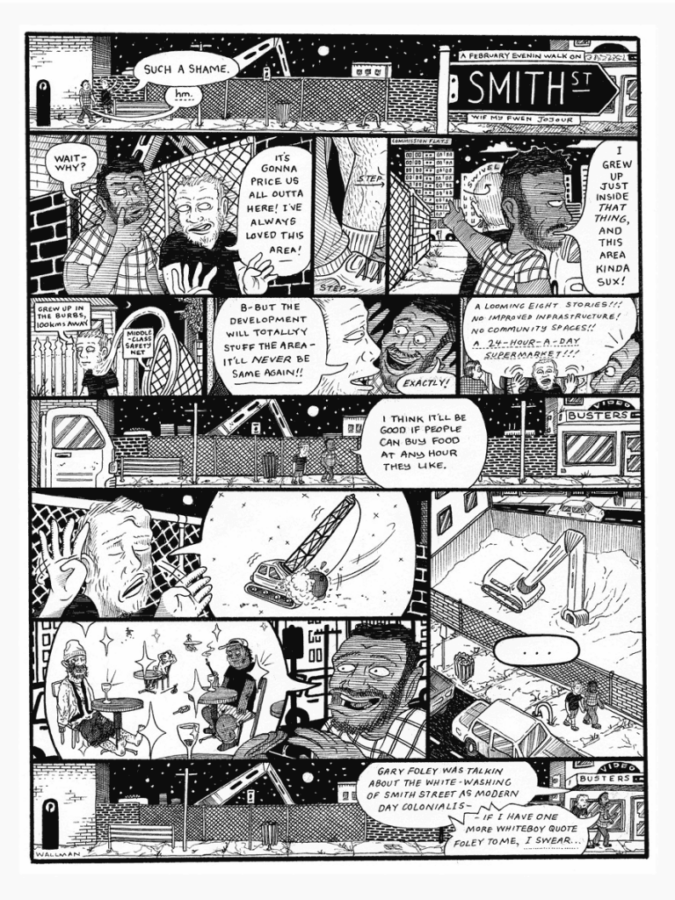
Here Australian politics is rightfully explored in hilarious homo-erotic interactions, drunken arguments about gentrification, small suburban acts of colonialism, gentle caresses between partners and shit fights among the anarchist art crowd. The conceptual range of the work from this period is staggering, but it feels rightfully and effortlessly ‘together’, a rigorous body of thought. If you were a part of the community of comics makers and figurative artists in Melbourne in the late naughties, you would expect a fleeting Wallman sighting every other day. Every shambolic group show in Brunswick or Collingwood had a new Wallman on the wall and it was usually the piece that made you linger and miss out on the last bottle of beer.
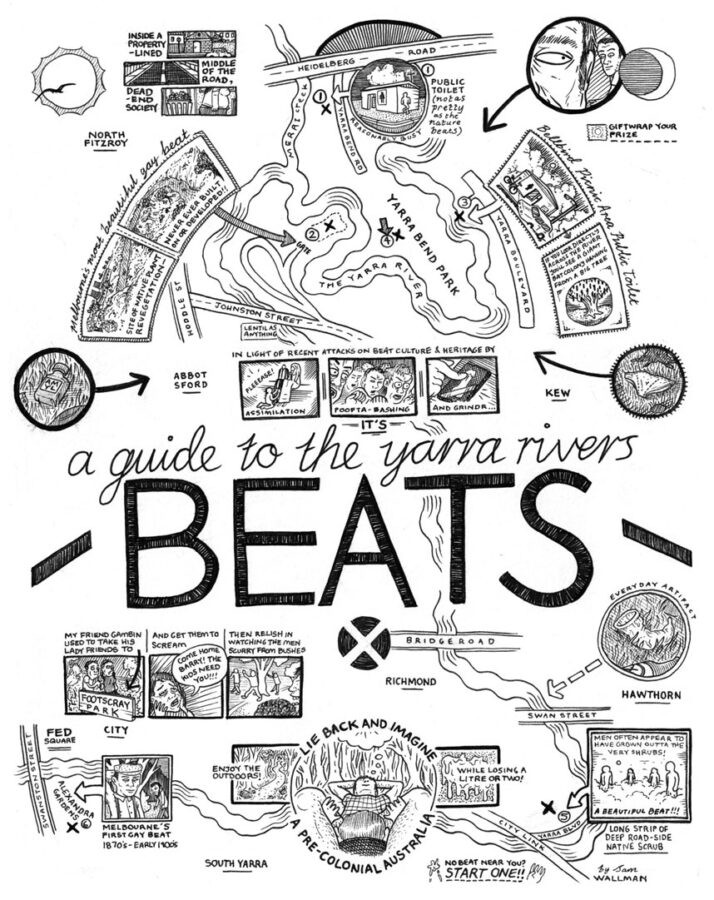
There are many moments in Our Members be Unlimited where we can catch the echo of these lost zines. Chapter seven is a technique honed in an old comic about gentrification on Smith Street (shown above). The chapter stages a dialogue between two workers: one a true believer in the possibilities of unionism and the other a worker who is just a little bit tired by it all. The latter character is easy to identify with, embarrassed by the current state of unions in Australia and reluctant to define themselves as a worker. This chapter is, to me, the kind of rhetoric that Wallman does well.
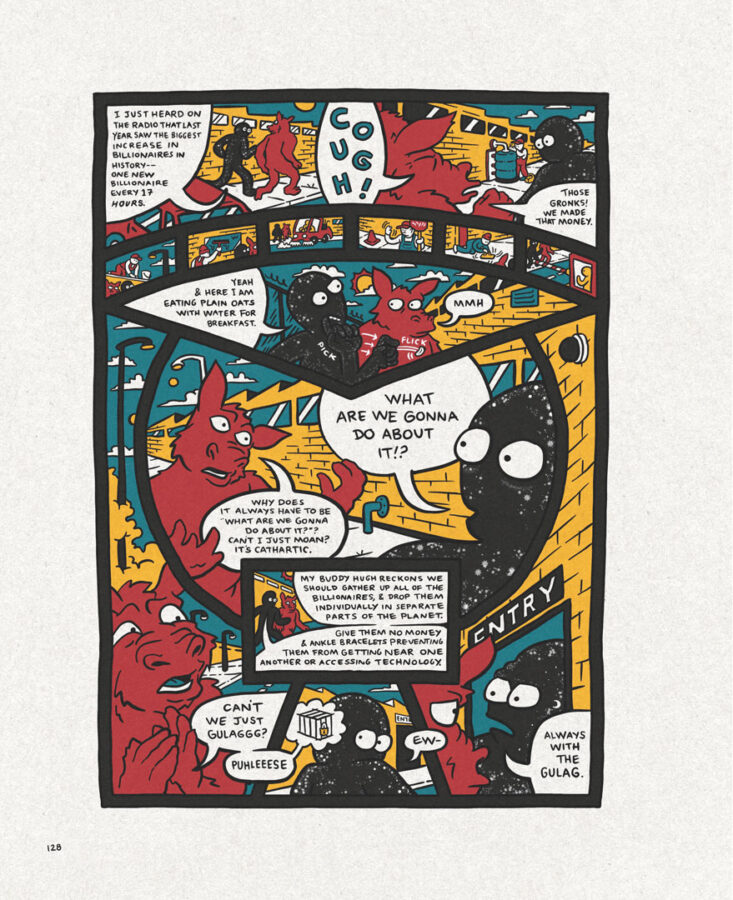
True inclusivity is something that he demands of his unions, and it is demonstrated in his best contentions. In the fleshy cartography of his page, there is room for multiple nuanced perspectives. Different worldviews are allowed to share space and nip at each other as they negotiate conclusions that are poignant but often unresolved. His polemics are most enduring for me when they are founded in his prodigious empathy rather than in the conscientious gathering of facts.
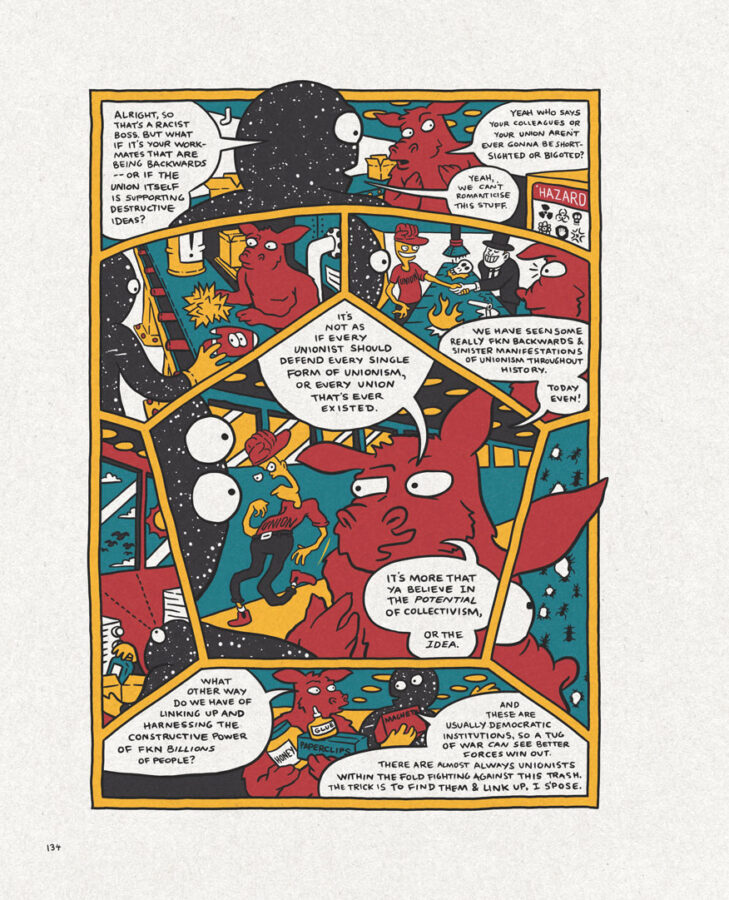
There is a wall in my house full of graphic novels and curious zines. I have obscure editions like the earlier Kramer’s Ergot books or Leigh Rigozzi and Kernow Craig’s Blood and Thunder anthologies. These are rare and impossible books which I still can’t believe exist. The thing is I don’t read these exotic books; instead I enthusiastically show them to visitors. I’m like some early nineteenth century naturalist, returning from the new colony with a stuffed platypus.
‘Look at this thing,’ I say, waving the desiccated husk around. ‘Can you believe this is a thing?’
I didn’t realise it until I started writing this review, but the Sam Wallman zines from this period are truly lost. I don’t have any of them in my collection. I know the oeuvre. I have read it all several times over, but each of these objects has had their time with me and escaped. A Wallman artefact has always been the thing to give to someone when you want to show people what comics can be. Maybe because of that, they are still out there in the wild.
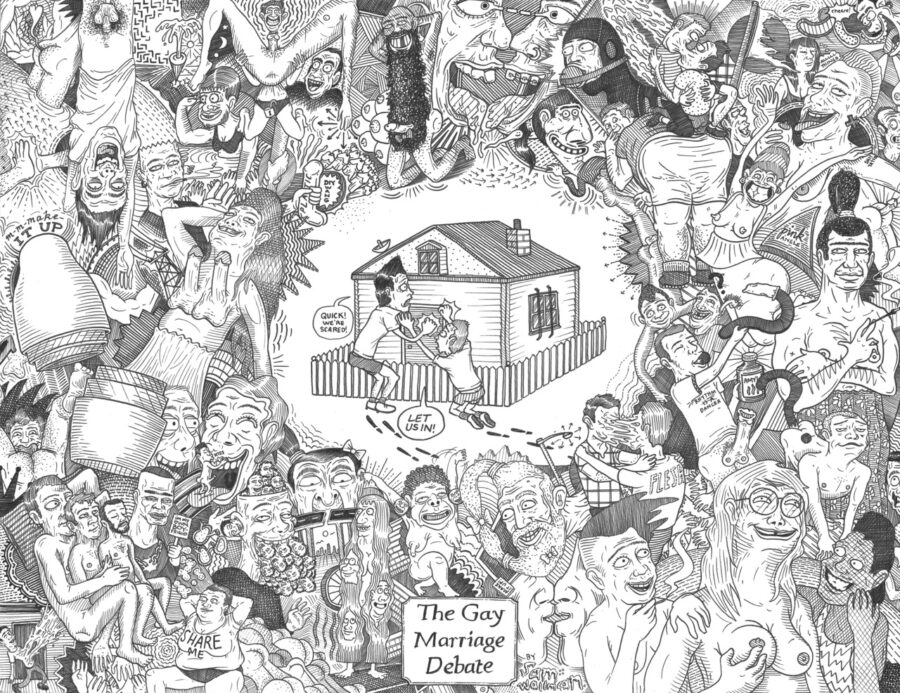
Peak Wallman?
Around 2013 Wallman began to professionalise his practice. He set to work as a freelancer with a generous ear and that hand of fire, describing himself as a comics journalist. Great clients seemed to be fighting to work with him and his stories got longer, more cautious, and tragically, they contained fewer glistening dicks and leering sex-grimaces. The tenor of his literary voice changed subtly in this transition. Where a Wallman cartoon once evoked the image of the artist at home in his studio scrambling to catch the quality of rich conversation with friends, it began to evoke the image of careful collaboration with editors, writers and communications teams. In this period, printed paper gave way to back-lit pixels and Wallman learned to make innovative use of a scrolling webpage. People all over the world loved Sam Wallman the journalist and his audience exploded.
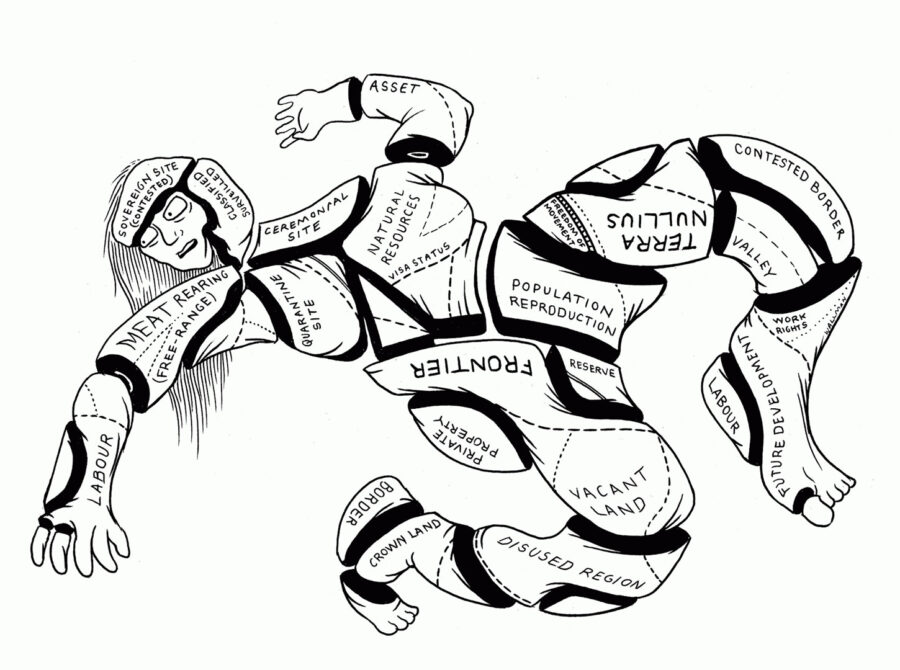
There’s a good argument to be made that this period is Peak Wallman, particularly when looking at a blistering run of work for Overland and a piece called So Below, commissioned by Michael Smythe’s Nomad Projects. One can’t help but admire his ability to sit with complexity and ambivalence, untangling our anxieties into clear deliberate strokes of black ink. This period has some of the strongest use of his trademark visual metaphors. The children of visual ideas first conceived in the zines of the previous decade matured and in full frisk.
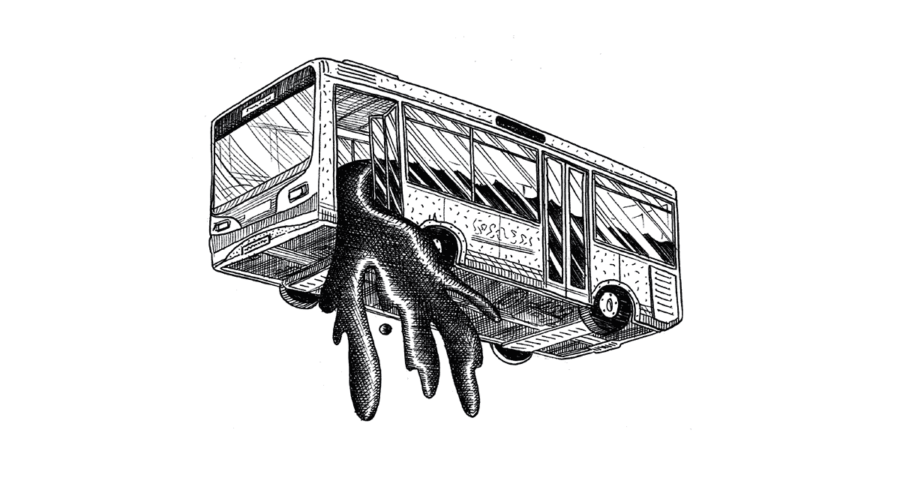
But this period isn’t my peak Wallman. Beginning in this period, in the transfer from cartoonist to comics journalist, I watched something creep into his comics that troubled me. Wallman’s polemics, formerly playful, curious and conversational, become vexed by the conflicting demands of journalism and propaganda. As part of his new understanding of his practice as a comics journalist he starts to gather hard evidence in earnest. He assembles small facts and anecdotes into arguments and positions that can be clumsy. It’s not that Wallman is no good at research, but that he seems misguided about what kind of evidence is appropriate now that he is presenting as a journalist. He’s trying to get us close to something that he knows – something that he clearly feels in his bones – but he’s trying to do it like the second string of the debate club, instead of as Australia’s most powerful visual communicator. Chapter four of Our Members is a good example of Wallman losing his epistemological mooring and floating off into a meaningless wash of data. The chapter sets out in pursuit of empirical rigour with the subtitle: ‘Unionism is a response to capitalism and capitalism knows how to study the numbers’. The chapter is a triumph of hand-generated lettering, but a less than triumphant argument assembled from numerical factoids that, to me, feel cherry-picked and poorly attributed.
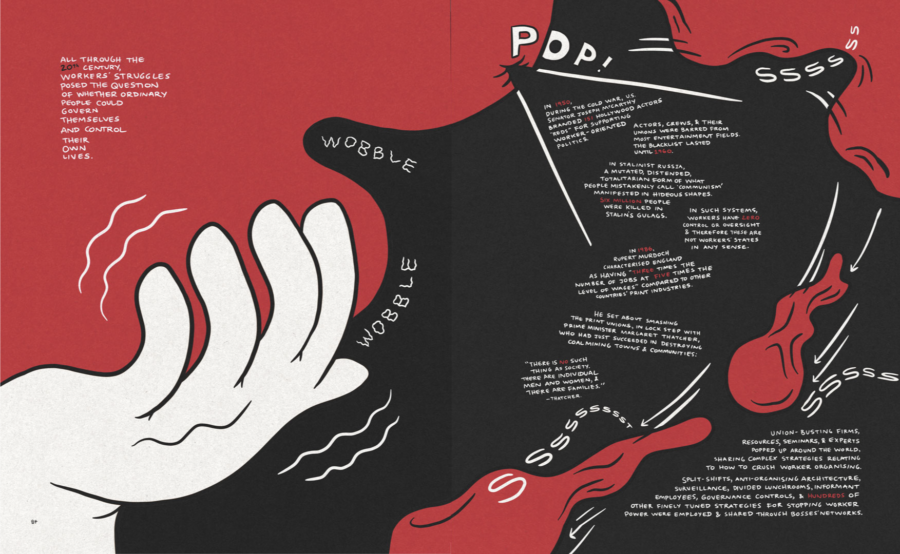
Perhaps the difference between Wallman the Journalist and Wallman the Zine-maker is that the former has a habit of collecting rhetorical molotovs, piling them up into a mound and presenting them to us as the truth. The zine maker used to just pick up one – just one – in that hand of fire and peg it as hard as he could. Occasionally in this book, as in some of his long form essays online, the ‘true’, the ‘right’ and the ‘right-on’ sometimes comes at the expense of the interesting, and, the interesting is, for me, a better springboard for political dreaming.
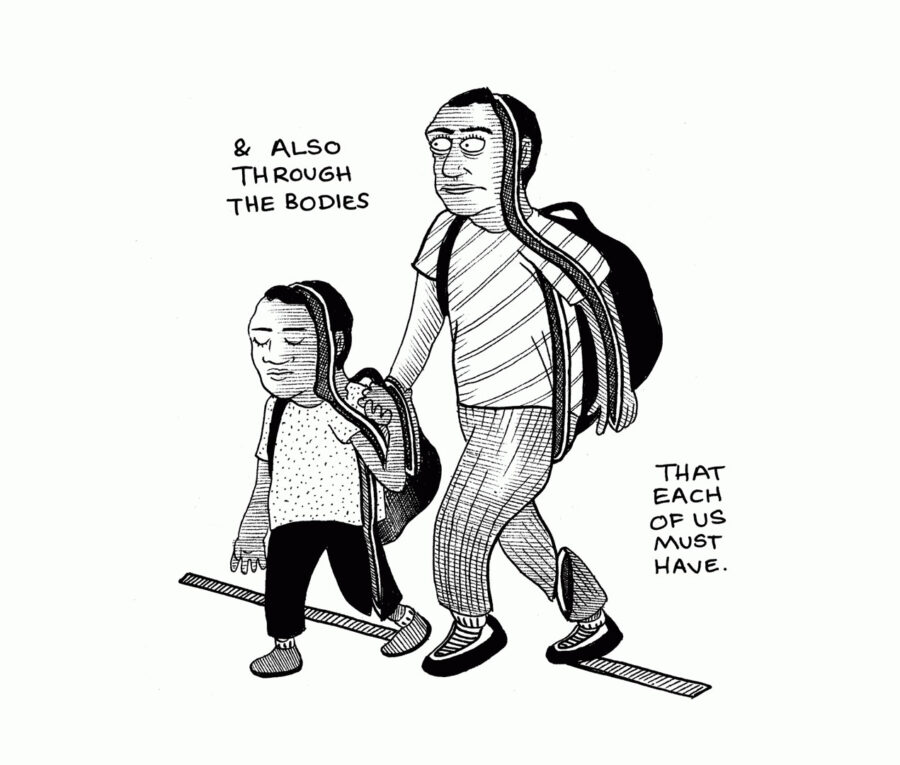
I spent some time with Wallman during this period. A memorable moment was when we got kicked out of the after party for the 2014 Walkley Awards because Sam kept harassing some powerful guy who had sold out his union. Sam was getting up in this guy’s face and calling him a scab and eventually a security guard ushered us out into the street. A pin-eyed orc from the Daily Telegraph chased us down the road demanding to know who Sam was. This incident speaks to something unresolved in Wallman as a slinger of truths and a maker of new meanings. Clearly he’s journalist enough to be nominated for a Walkley, but too much of an ideologue to fit in at the piss-up.
The Biggest Sighting Yet?
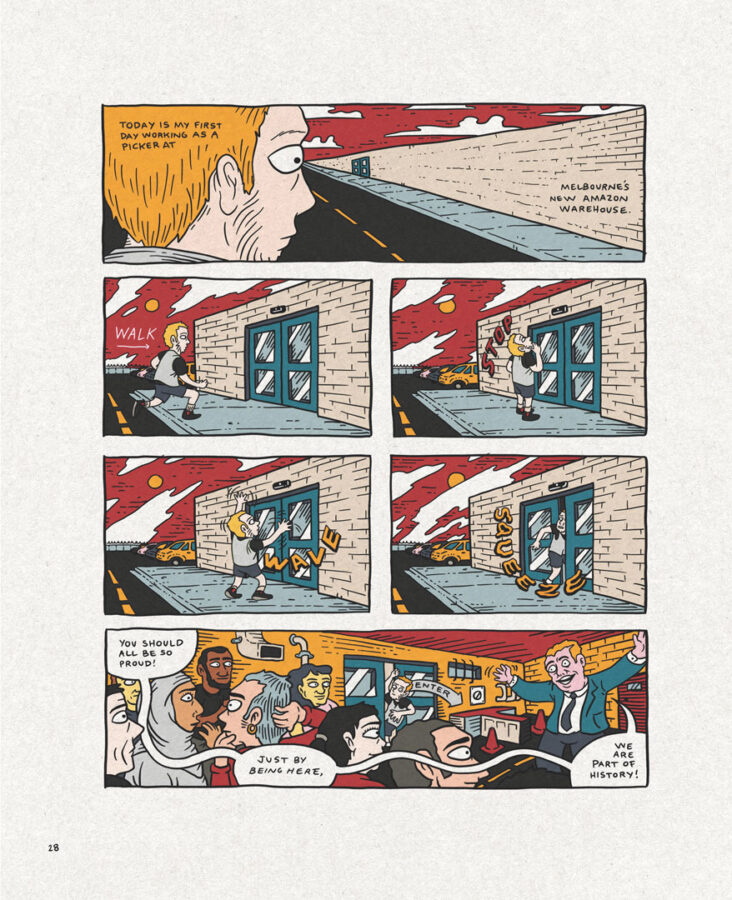
As a complete volume it is probably misguided to approach Our Members be Unlimited as a work of comics journalism. It makes sense for Scribe to present it as a sibling of Joe Sacco’s Footnotes in Gaza or Sarah Glidden’s Rolling Blackouts, but this book is something weirder and more esoteric. Wallman, like almost all of us working in long form comics, is still in eternal R&D mode, testing out what works outside of art-comics as he grapples with the impossible job of finishing what he started.
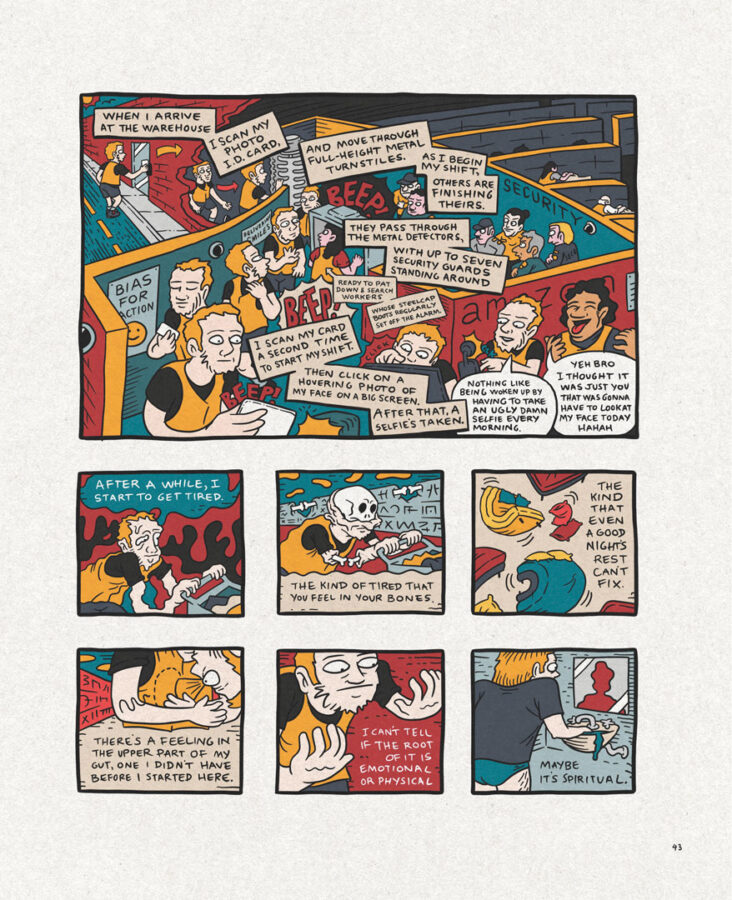
The centrepiece of the book is its second chapter, which is the most journalism-like in methodology and, consequently, the most compelling of the discrete essays. This chapter follows Wallman as he enters a job at Amazon in the fulfilment centre assembling the packages from our Amazon orders. Workers at the warehouse are required to run around stuffing cardboard chests with mediocre talismans: a set of nail clippers. A HDMI dongle. A book about topiary. A packet of sea monkeys. Boring jobs, described in granular detail, make fascinating reading, and this job – like the production line at General Motors in mid-century America – is symbolic of the class struggle of our time.
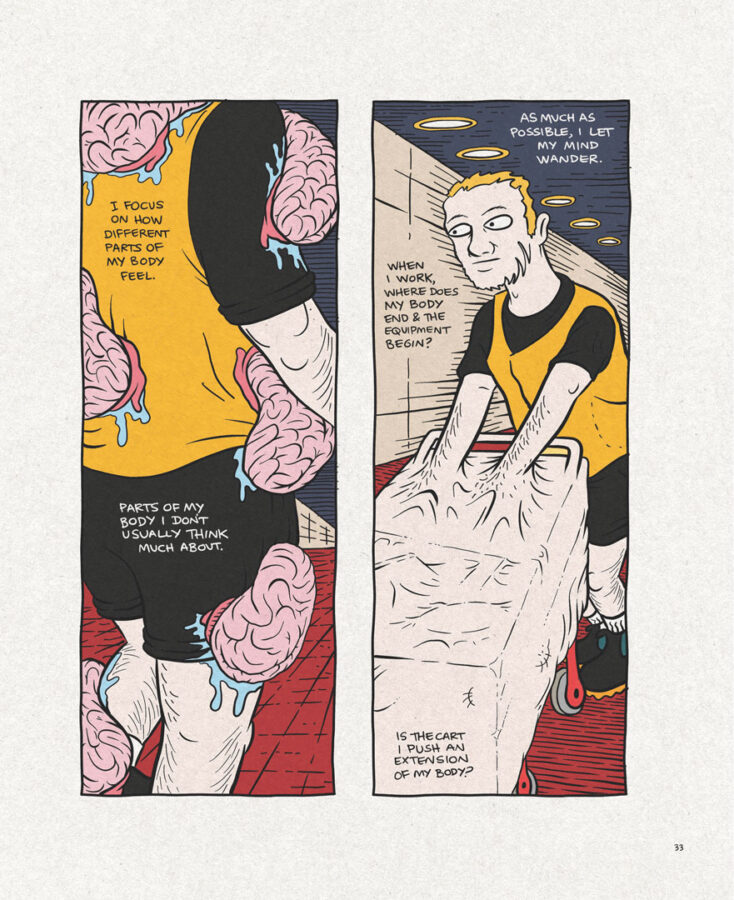
Wallman punches his card and gets to work, telling the other workers that he is there to earn a bit of rent-money. We know that secretly he’s there to start fomenting a worker’s movement. And we know that secretly he’s doing field research for a comic. Wallman’s strength as a field researcher might be that he is archetypically cool and yet he is unreasonably devoted to an uncool idea. He remains startlingly present during his drift through the Amazon warehouse and his observations are fascinating and funny. He likes people. People like him. He makes cheap shots at the bosses and listens carefully to everyone who isn’t a boss. His descriptions of the work have a phenomenological ring, as he makes the frenetic and endless dash through the warehouse. He describes the moment-to-moment rhythms of this new kind of frantic drudgery and shows us the admirable things that people do to endure, and even enjoy, it. In this chapter Wallman is most interested in the glue that binds workers and as an illustrator he is well placed to depict the micro-interactions between people. With these observations, he constructs the compelling argument that spans the breadth of the book: that the unionism of the future and its utopian possibilities are here already, observable in the acts of care and solidarity shared between workers.
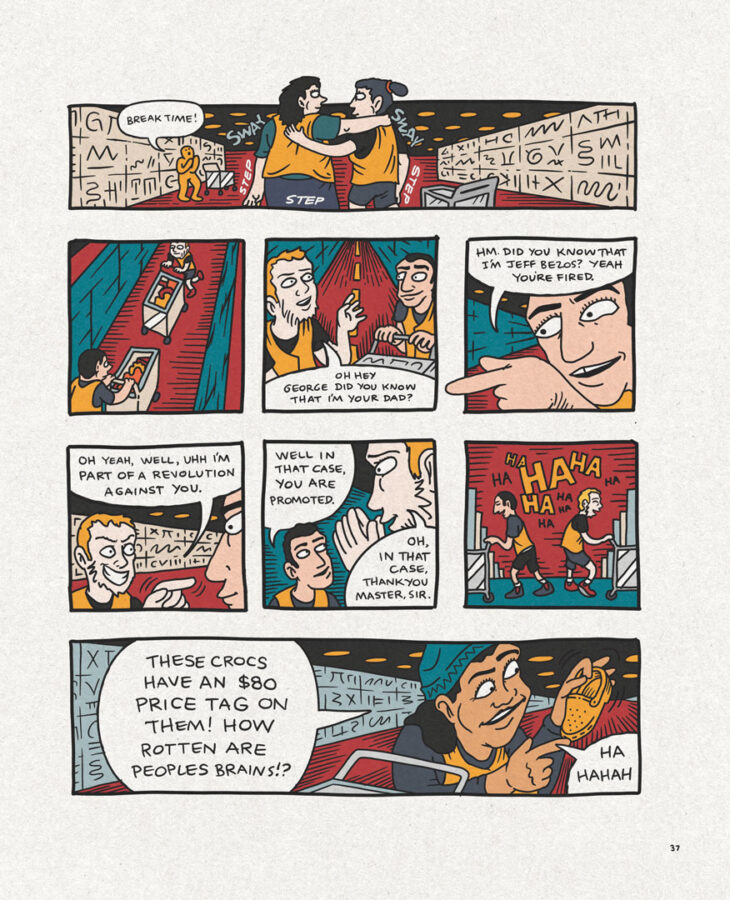
The Amazon chapter of Our Members brough me back to Steinbeck’s enduring story of rabble rousers in In Dubious Battle, which follows party members, Jim and Doc McLeoud, stalking the rows of a California apple orchard looking for an angle to get a strike going. There’s a compelling story archetype here that is perhaps less common than it should be in the Anglophone literary canon. If we look at a period that stretches from Truman’s post-war to Trump’s post-truth, it’s clear that we can’t seem to shake off a fascination with individualism and can’t find the ‘cool’ in collectivism. But maybe, as we spiral into another recession, it’s time for this to change. My media feed is queuing up Our Members Be Unlimited before a great shop-floor sitcom called Superstore and a recent audio piece in the New York Times about a union push in a Detroit Amazon fulfilment centre. Is something new happening here? Is it possible to imagine a new push of workplace stories about starting unions and fomenting strikes? Are we ready to think of ourselves as workers again?
Any story about the risky business of union agitation makes me feel tense, like I’m watching someone I love try to light a fire with wet wood. I honestly haven’t got the imagination to see how a hot blaze could possibly result from this soggy activity, but something in me, deep down, won’t let me look away. I’ll keep watching as long as storytellers like Wallman keep flicking matches.
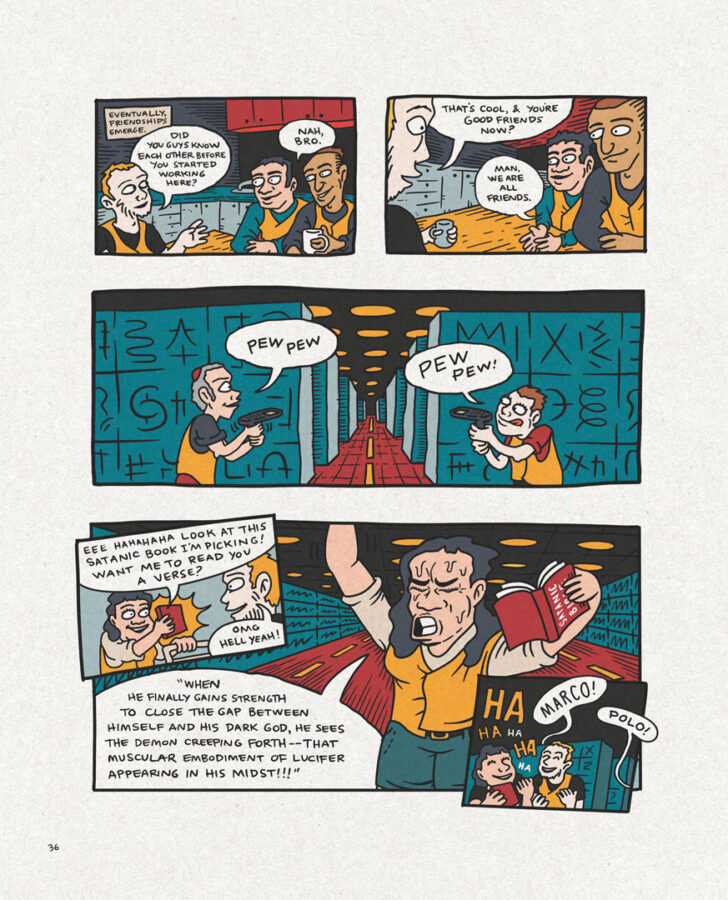
Now that I’ve had an intimate sighting of this most recent Wallman – the biggest yet! – I don’t know what to do with the book. I could put it on my bookshelf, but even rightfully wedged in between Peter Kuper and Nicky Minus it doesn’t feel right. In my collection it would become another grotesque artifact that I show to visitors. Another dried-out platypus, frozen in time and robbed of the electric charge of ephemerality. Instead I think I might leave it on the train. Or put it in one of those silly street libraries. Or cover it in contact and slip it into the bookshelf at the local café.
I like to imagine a younger version of myself encountering this book somewhere out there. I won’t know who Sam Wallman is or what a graphic novel ought to be, but I will know that this ridiculous thing is for me. I will read it cover to cover in one breathless shuck and I will feel something begin to squish behind my eyes. The feeling is the brittle politics of my small-town childhood becoming supple, like warm pizza dough. I will finish reading and leave the book behind when I leave. I won’t even remember its name. It will be that platypus in the wild. Here with me for just a few short moments. Here with me forever.
